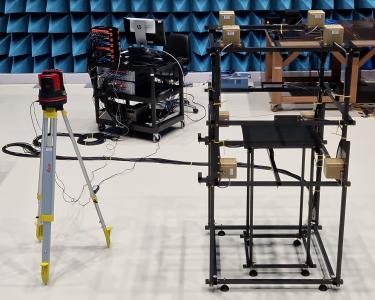Advanced DC and AC Magnetic Verification

To develop efficient verification methods for DC and AC magnetic emissions at unit level with intrinsic rejection of ambient noise
Payloads sensitive magnetic fields require low magnetic field emission levels from other payload instruments or platform equipment, or at least the characterization of them. Payloads can be sensitive to constant ("DC") or time-varying ("AC") magnetic fields itself, both periodic and aperiodic, or especially to the spatial field gradients, i.e. the rate of change in magnetic field with distance.Verification and characterization of payload instrument and platform equipment units allows to establish bottom-up magnetic models at sub-assembly and system levels for prediction magnetic fields and their gradients at the location of sensitive payloads. State-of-the-art test equipment will reduce testing time and help to reduce measurement uncertainty.DC and AC magnetic verification methods with advanced ambient noise rejection need to be combined for efficient testing. The use of spherical harmonics expansion and Gaussian separation into inner and outer sources for both AC and DC magnetic verification of platform equipment and payload instruments will allow to relax requirements on the ambient environment during test or to target more stringent requirements. To verify functionality, the existing concepts need to be integrated in a proto-type multi-magnetometer facility and combined with a low-noise ambient field compensation system. A special focus will be the measurement and verification of spatial magnetic field gradients and their temporal evolution at relevant time scales, e.g. 1000 s, i.e. equivalent to 1 mHz.This activity encompasses the following tasks:- Assessment of existing methods and facilities and identify hardware modifications for multi-magnetometer facility to combine them.- Study of existing data acquisition and dipole modelling software suites to include Gaussian separation for DC and AC fields and gradients.- Implementation of hardware elements for AC/DC multi-magnetometer facility, e.g. alignment/calibration, low-noise ambient field compensation system, gradiometer configuration, extended data acquisition system- Upgrade of software with necessary modifications for operation of AC/DC multi-magnetometer facility, e.g. to interface with extended data acquisition system, to facilitate gradient measurements/modelling, to support alignment and calibration, and to operate ambient field compensation system.- Initial design validation on a test item with known characteristicsA validated "breadboard" facility (TRL4) will be needed as a deliverable to ESA as reference implementation and to serve as input and starting point for follow-on activities to develop engineering and qualification models.
